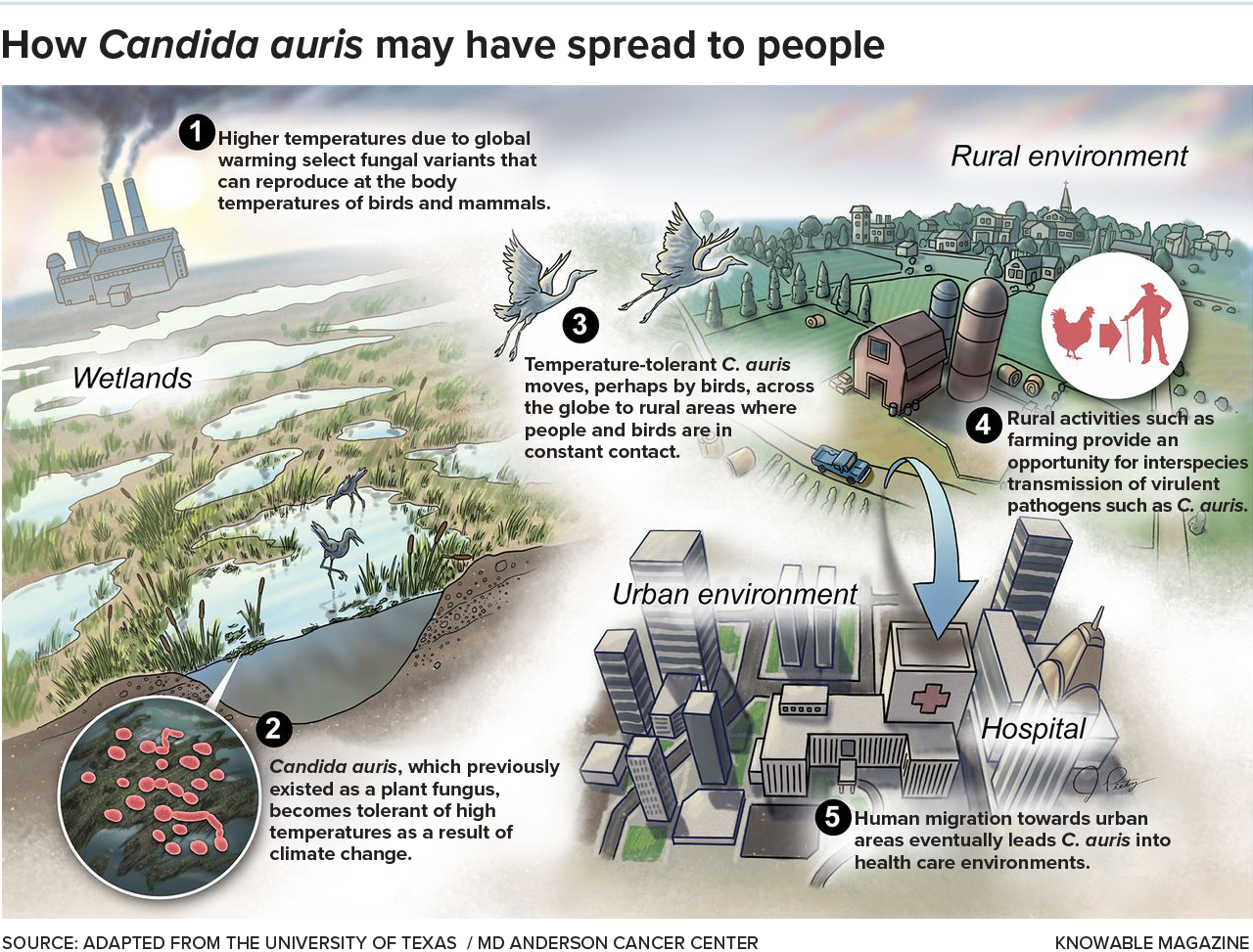Climate Change And The Increased Prevalence Of Invasive Fungal Diseases

Table of Contents
The Impact of Climate Change on Fungal Pathogen Viability and Growth
Climate change, characterized by rising temperatures and increased humidity, significantly impacts the viability and growth of fungal pathogens. These environmental shifts create optimal conditions for fungal proliferation, leading to a wider geographic range and increased virulence. Many fungal species have temperature optima that are being increasingly met in various regions of the world due to global warming.
- Increased temperature optima for various fungal species: Many fungi thrive in warmer temperatures. As global temperatures rise, previously unsuitable environments become habitable for a wider range of fungal pathogens, expanding their potential geographic reach.
- Higher humidity leading to increased spore production and dispersal: Increased humidity provides ideal conditions for spore production and dispersal, crucial for fungal reproduction and infection. Higher humidity levels facilitate the spread of fungal spores over greater distances, increasing the potential for widespread outbreaks.
- Extended growing seasons enabling multiple infection cycles: Longer and warmer growing seasons allow for multiple cycles of fungal growth and reproduction within a single year. This increase in the number of reproductive cycles accelerates the spread and establishment of fungal pathogens.
- Examples: The emergence and spread of Candida auris, a highly drug-resistant fungus causing serious bloodstream infections, has been linked to warmer temperatures. Similarly, Aspergillus fumigatus, a common cause of lung infections, and Cryptococcus neoformans, which can cause life-threatening meningitis, are showing increased prevalence in regions experiencing climate change effects. Climate modeling suggests that these trends will continue and intensify in the coming decades.
Altered Ecosystems and the Spread of Invasive Fungal Diseases
Climate change dramatically alters ecosystems, creating conditions favorable for the emergence and spread of invasive fungal diseases. Deforestation, habitat loss, and biodiversity reduction weaken ecosystems, making them more susceptible to fungal invasion. Furthermore, changes in vector interactions – such as insects carrying fungal spores – play a crucial role in fungal dispersal.
- Increased susceptibility of weakened ecosystems to invasive fungi: Stressed ecosystems, weakened by deforestation, habitat fragmentation, and pollution, are less resilient to invasive fungal species. The loss of biodiversity further reduces the ecosystem's ability to naturally control fungal populations.
- Changes in plant-fungal interactions facilitating fungal spread: Climate change can alter the relationships between plants and fungi, potentially increasing the susceptibility of plants to fungal infection and enabling the spread of pathogenic fungi.
- Loss of natural fungal antagonists reducing disease control: Many fungi have natural antagonists that help regulate their populations. Climate change can disrupt these relationships, leading to an imbalance and increased prevalence of pathogenic fungi.
- Examples of ecosystem changes affecting fungal distribution: Changes in rainfall patterns, increased frequency of extreme weather events, and sea level rise can all create new opportunities for fungal pathogens to spread and establish themselves in new areas.
The Public Health Implications of Climate Change-Driven Fungal Infections
The increased prevalence of invasive fungal diseases driven by climate change poses a significant threat to human health, particularly for immunocompromised individuals, such as those with HIV/AIDS, cancer, or organ transplants. These individuals are far more susceptible to severe fungal infections, leading to increased morbidity and mortality. The rising incidence also places a substantial strain on healthcare systems and resources, globally.
- Higher infection rates in vulnerable populations: Immunocompromised individuals are at significantly higher risk of severe fungal infections, and climate change-driven increases in fungal prevalence are exacerbating this issue.
- Increased severity and mortality of fungal infections: Climate change may lead to more virulent strains of fungi, resulting in more severe infections and increased mortality rates.
- Strain on healthcare systems and resources: The rising number of invasive fungal infections places a significant burden on healthcare systems, requiring increased resources for diagnosis, treatment, and prevention.
- Growing threat of antifungal drug resistance: The overuse and misuse of antifungal drugs are contributing to the development of antifungal resistance, making treatment more challenging and less effective. This problem is further exacerbated by the increase in fungal infections.
Specific Examples of Climate Change-Exacerbated Fungal Diseases
Several fungal diseases demonstrate a clear link to climate change. Coccidioidomycosis, a respiratory illness caused by the fungus Coccidioides, is showing an increased incidence in regions experiencing prolonged drought followed by heavy rainfall. Similarly, the geographic range of Histoplasma capsulatum, which causes histoplasmosis, is expanding due to changing environmental conditions. Detailed case studies and geographical distribution data strongly support this correlation. Further research is needed to identify and analyze the complete implications of climate change on all fungal diseases.
Conclusion
The evidence strongly supports a significant connection between climate change and the increased prevalence of invasive fungal diseases. The consequences are profound, impacting public health, ecosystems, and the global economy. The rising incidence of these infections, coupled with the threat of antifungal resistance, poses a serious challenge to healthcare systems worldwide. Further research is urgently needed to improve surveillance, develop effective prevention strategies, and find new antifungal treatments. We must also address climate change itself to mitigate the long-term risk of these emerging infectious diseases. Learn more about the connection between climate change and invasive fungal diseases, support research efforts, and advocate for policies that will mitigate climate change and protect public health from this growing threat. Search for more information using the keywords "climate change" and "invasive fungal diseases."

Featured Posts
-
 Crowd Violence Mars Paris Roubaix Mathieu Van Der Poel Attacked Files Lawsuit
May 26, 2025
Crowd Violence Mars Paris Roubaix Mathieu Van Der Poel Attacked Files Lawsuit
May 26, 2025 -
 La Vive Altercation Entre Thierry Ardisson Et Laurent Baffie
May 26, 2025
La Vive Altercation Entre Thierry Ardisson Et Laurent Baffie
May 26, 2025 -
 The Rationale Behind Trumps Trade Confrontation With Europe
May 26, 2025
The Rationale Behind Trumps Trade Confrontation With Europe
May 26, 2025 -
 Naomi Campbell And Anna Wintours Reported Feud Met Gala 2025 Implications
May 26, 2025
Naomi Campbell And Anna Wintours Reported Feud Met Gala 2025 Implications
May 26, 2025 -
 Canyon Aeroad Unveiling Mathieu Van Der Poels Custom Bike For Tirreno Adriatico
May 26, 2025
Canyon Aeroad Unveiling Mathieu Van Der Poels Custom Bike For Tirreno Adriatico
May 26, 2025
